Part of what makes makeup routines so fascinating is the pure breadth of products available. Users are invited to step into an entire world of products and effects to create a perfect look that complements their personality, features, and skin tone. This same principle applies to lip products, where it’s essential to understand the differences between lip stains and lipsticks.
While both products exist to beautify lips, they do differ significantly in ways that businesses must be aware of to select the right varieties for their target consumer base. Read on to dive into the differences between lip stain and lipstick in detail.
Table of Contents
An overview of the lip makeup product market’s growth forecast
What makes lip stains and lipsticks different
Lip stains vs. lipsticks: Which is the more profitable option?
Summary
An overview of the lip makeup product market’s growth forecast
According to the most current lip makeup market report, sales of related products reached USD 2.56 billion in 2023. Experts predict this will rise a CAGR of 7.33% to reach USD 7.10 billion by 2030. The lip makeup market continues to grow because of its dynamic nature, changing according to consumers’ tastes, fashion trends, and developments in cosmetic technology. While North America is the largest lip makeup market, sales in Asia Pacific are growing exponentially.
What makes lip stains and lipsticks different
Formulation

At first glance, lip stains and lipsticks appear similar, but each features a different formula. Unlike waxy lipsticks, lip stains mostly consist of lightweight liquids or gels. This allows the color pigments to penetrate the wearer’s lips, creating a true “staining” effect.
The magic of long-lasting lip stains lies in their higher color pigment concentration. Manufacturers formulate these dyes to latch onto lip cells, providing vibrant colors for hours. Also, these products often have fewer emollient ingredients (like waxes and oils), making them feel slightly dry on the lips, which in some cases can benefit from the application of a lip balm for added moisture.
Conversely, lipsticks achieve their creamy texture by blending waxes, oils, and emollients. For this reason, lipsticks create a more comfortable barrier that hydrates and plumps the user’s lips. Lipstick formulas come in a massive variety of colors, from light to dark to shiny and matte.
Verdict
Lipsticks can sometimes feel more comfortable to wear as they hydrate the lips, while lip stains feel dryer and may require the addition of lip balm.
Application
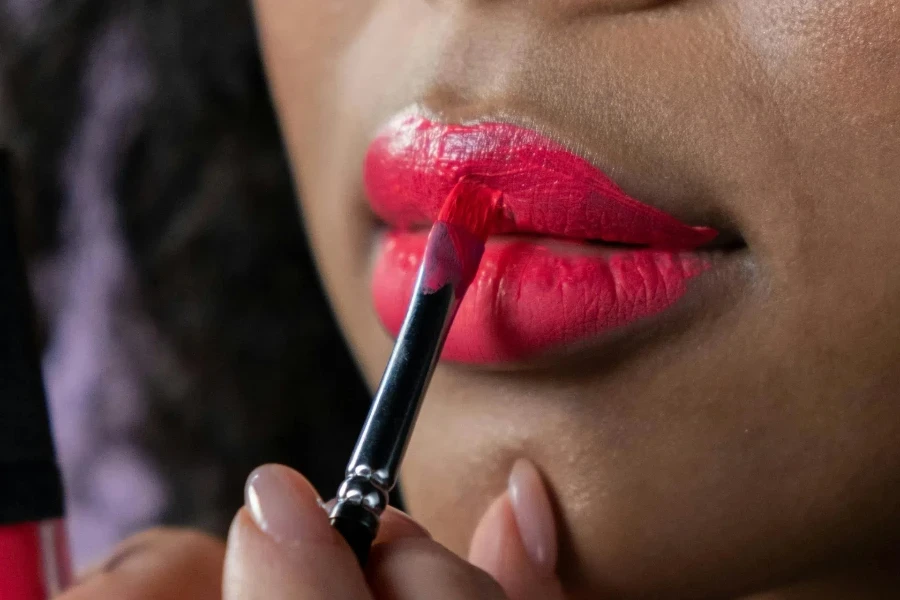
While lip stain and lipstick applicators share some similarities, they can also have some key differences based on formula and desired application style. For example, doe-foot wands – with their flexible, tapered tips for precise control – are a common type of applicator for lip stains. They’re also great for tapping and blending stains for a diffused, natural look. Other lip stains can simply be applied with a finger.
Lipsticks, meanwhile, often come in a slanted-tip bullet form. This angled design allows easy outlining and lip filling, while the pointed end offers more precision for defining cupid bows and corners.
Verdict
Because of the “in-built” applicator of lipsticks, they are arguably easier to apply than lip stains. However, the range of lip stain applicators means that no matter the user’s preference, they’re likely to find a style that works for them.
Finish
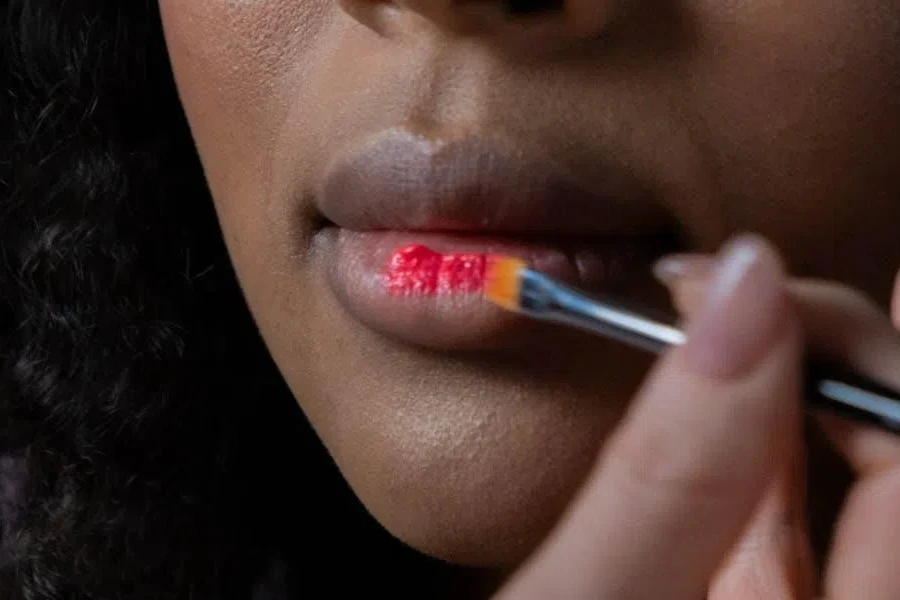
Lip stains prioritize staining power and lightweight textures, narrowing the number of finishes available. For example, it can be more difficult to achieve finishes that shimmer and shine, but matte is a practical result. Lightweight, water-based formulas usually dry into a velvety, non-shiny finish, providing a long-lasting, natural-looking stain perfect for everyday wear.
Although matte is the more common finish for lip stains, some offer a slightly satin finish with a hint of shine. These lip stains are great for consumers who don’t want a flat look and prefer a touch of dimension. However, these may not be as long-lasting as matte finishes.
Contrarily, lipsticks offer various finishes, catering to a diverse range of desired effects. Check the table below for the more common lipstick finish types:
| Lipstick finish | Description |
| Matte | Matte lipsticks are long-lasting, have a high-pigmented color and are non-shiny, making them a popular choice for bold or sophisticated looks |
| Satin | Satin lipsticks offer a subtle sheen and rich color between matte and cream finishes. They are a versatile option for day and night wear. |
| Cream | Creamy lipsticks have a hydrating feel with a soft and shiny finish. However, they may not last as long as other finishes. |
| Gloss | Lip glosses create a high-shine, wet-looking finish using oils and emollients |
Verdict
Lipsticks offer more finish options than lip stains, where matte lip stains remain the most practical.
Removal
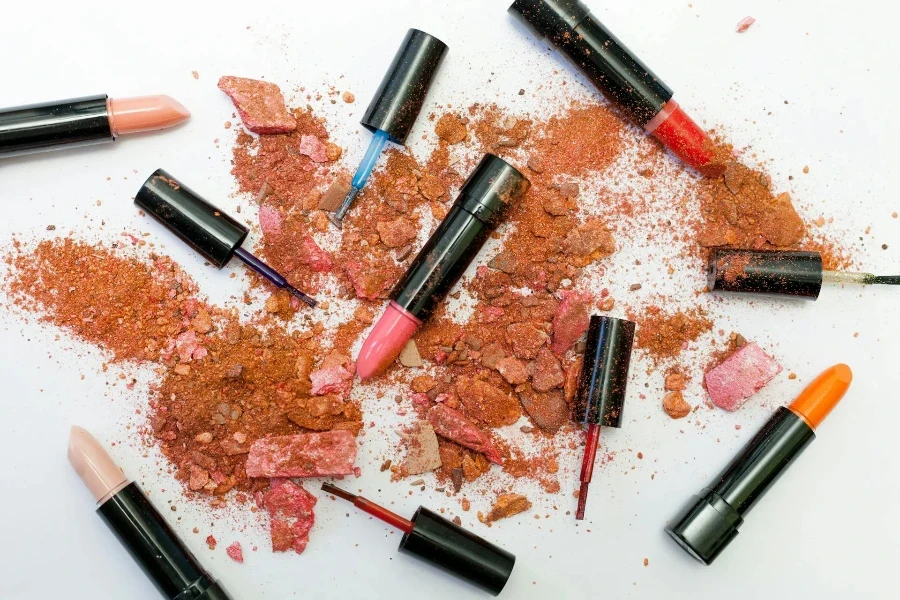
Lip stains are harder to remove than lipsticks because of the higher color pigment concentration that penetrates the user’s top skin layer. Oil-based makeup removers and micellar water with oil molecules can be used to effectively remove lip stains. Natural oils like coconut and olive work, too, but require rubbing with cotton pads or washcloths.
Lipsticks are easier to remove than lip stains overall. Regular makeup removers will work for most of them, except long-wear formulas. Matte lipsticks may be more stubborn, but creamy varieties will come off easily with makeup removers or micellar water.
Verdict
Lipsticks tend to be easier to remove than lip stains overall due to the latter’s deeper penetration of the user’s lips.
Lip stains vs. lipsticks: Which is the more profitable option?

Based on consumer interest, lipsticks have the upper hand over lip stains when it comes to profitability. Google Ads stats show that in March 2024, there were 1.2 million searches for lipsticks versus 301,000 searches for lip stains during the same period.
Summary
In 2024, both lip stains and lipsticks offer a viable sales prospect for those in the cosmetics industry. The key is researching the best products for your consumer base and knowing which product achieves different looks for a variety of occasions.
While lipsticks have higher search interest than lip stains, it would be beneficial to offer both so as to attract a broader range of customers. No matter which you’re looking for, you’ll find the exact textures, colors, and finishes among the thousands of options on Chovm.com.
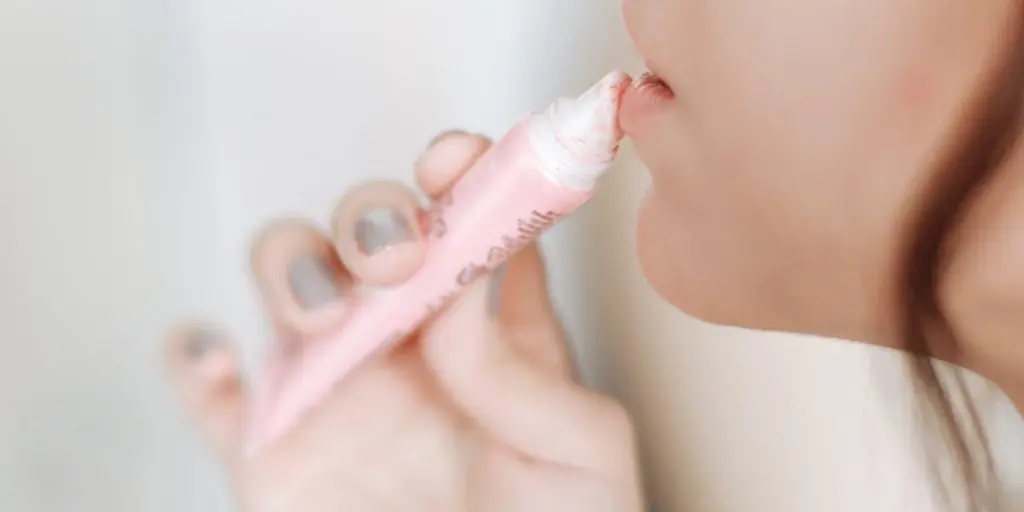
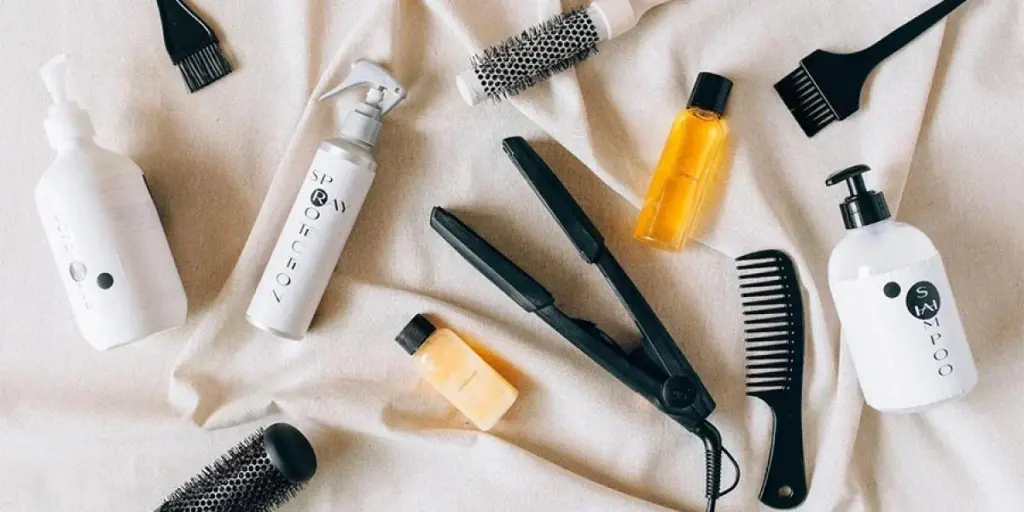



 বাংলা
বাংলা Nederlands
Nederlands English
English Français
Français Deutsch
Deutsch हिन्दी
हिन्दी Bahasa Indonesia
Bahasa Indonesia Italiano
Italiano 日本語
日本語 한국어
한국어 Bahasa Melayu
Bahasa Melayu മലയാളം
മലയാളം پښتو
پښتو فارسی
فارسی Polski
Polski Português
Português Русский
Русский Español
Español Kiswahili
Kiswahili ไทย
ไทย Türkçe
Türkçe اردو
اردو Tiếng Việt
Tiếng Việt isiXhosa
isiXhosa Zulu
Zulu